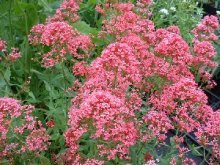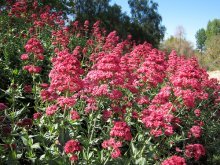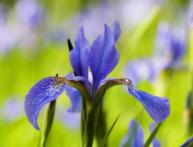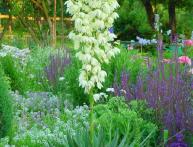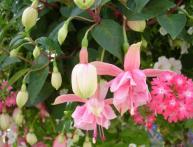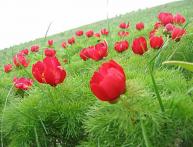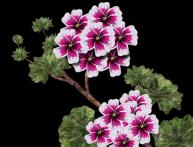Kentranthus is a wonderful plant for a sunny flower bed
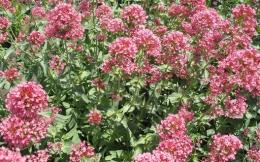
Kentranthus is grown in open areas, rock gardens, mixborders, and used to decorate borders and paths. This plant prefers well-lit places and tolerates direct sunlight. Does not like drafts, dampness and cold.
Content:
Kentranthus: cultivation and care
The soil for centranthus should be air and water permeable, moderately dry, and calcareous and fertile in composition. The plant can get by without additional fertilizer, but if the soil is not suitable for it, then you can apply fertilizer 2 times a month (during the period of active growth, nitrogen-containing fertilizers are applied, then nitrogen-free ones). Kentranthus does not like excess moisture, so it is watered only when the weather is very dry.
To achieve repeated flowering of centranthus, after the first flowering you need to cut off its inflorescences to the top leaf. After some time, the plant will bloom again. And in the fall you will need to completely cut off all the stems.
Preparing this flower for winter depends on the climate - in warm regions you can only cover the bush with a layer of peat, humus or just leaves. And if the winter can be severe or snowless frosts are expected, then you need to build a good shelter: cover the cut bush with leaves, rags and cover it with film (the film must be fixed) or build a frame structure that will protect not only from cold, but also from moisture.
To construct a shelter, you can also use non-woven material - agrofibre, which is widely used by flower growers.
After 3 years, the centranthus bush loses its decorative effect, so it needs to be renewed (planted a new bush or grown from seeds). This flower is resistant to diseases and various pests, but in wet weather spots may appear on the leaves. If this happens, then the affected leaves need to be cut off and the dense bushes need to be thinned out.
Growing from seeds
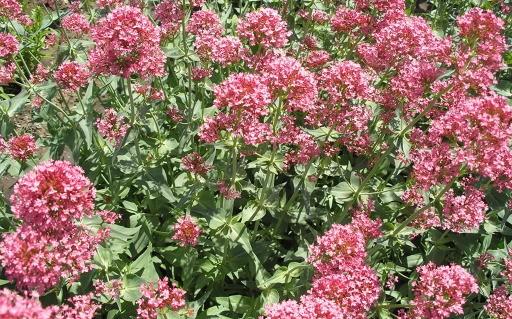
Centranthus is propagated in two ways: by dividing the bush and sowing seeds. Division is carried out in early spring (before increased growth) or autumn (after it blooms).
Seeds can be sown both in a greenhouse and in open ground. In open ground, seeds are sown in the fall in the place where centranthus should grow in the future. Before the onset of winter, crops need to be covered with leaves, peat or other mulch. Another option is to sow the seeds in open ground in April or May, but then there is a high probability that the plants will develop and bloom poorly.
Spring sowing It is better to produce in homemade or special greenhouses. The best time for this is the end of February or the beginning of March. Making a greenhouse yourself is not difficult - you just need to cover the bowl with the sown seeds with film or glass and place it on the windowsill.
Further care for centranthus seedlings is as follows: every day we open the film or glass for ventilation for 5-7 minutes. After the emergence of seedlings, we gradually increase the ventilation time, and after 2-3 weeks we completely remove the glass (film). When the seedlings grow up and become crowded, you need to make a selection - plant them at a greater distance or in separate pots.In June it will be possible to plant centranthus seedlings in a permanent place.
It often happens that a centranthus bush produces a lot of self-seeding (seeds from the plant fall into the ground and then germinate on their own). In this case, in the spring just needs to be transplanted strengthened seedlings to a permanent place at a distance of 40-50 cm from each other.
Types of centranthus
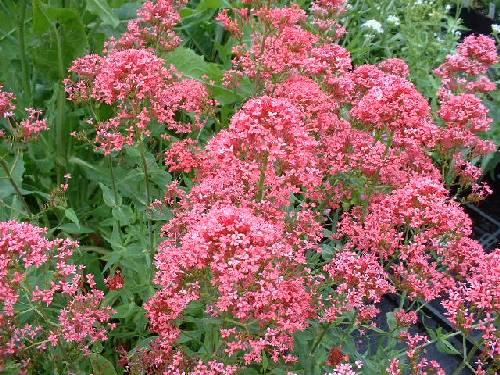
Kentransus belongs to the Valerian family, which is why it is often called valerian. But unlike medicinal valerian, this plant does not have any beneficial properties. The following types of centranthus are cultivated in floriculture:
- Centranthus red (ruber)
- Kentransus angustifolius
- Centranthus valerian (calcitrapa)
- Kentransus longiflorus
The most common type is red kentransus (often called ruber). It grows up to 1 m in height and up to 60 cm in width. Its flowers are small and collected in large dome-shaped inflorescences. In addition to the pure type, 3 more varieties of red kentransus are known:
- Coccineus has bright pink flowers, which is why it is often called crimson jingle.
- Albus, Albiflorus - white flowers.
- Rosenrot - purple-pink flowers.
In floriculture, the second most grown plant is Kentransus angustifolia - also a perennial up to 1 meter high. It is often combined with red ketranthus into one species. Kentranthus valerian is an annual plant, the height of which is only 10-30 cm. This type of Kentranthus blooms in April-June with pink flowers, which are collected in inflorescences.
Kentransus longiflora is perennial plant, the height of which is up to 1 meter. All its leaves are covered with a gray coating.Flowering occurs in May-July, and the flowers are purple-red and collected in corymbose inflorescences.
As you can see, ketranthus is not difficult to care for and is perfect for growing in a sunny and dry place. The most popular in floriculture is red kentransus, which can be easily grown from seeds or propagated by dividing the bush.
Watch how to make an alpine slide in the video:
Interesting information about the vegetable garden

